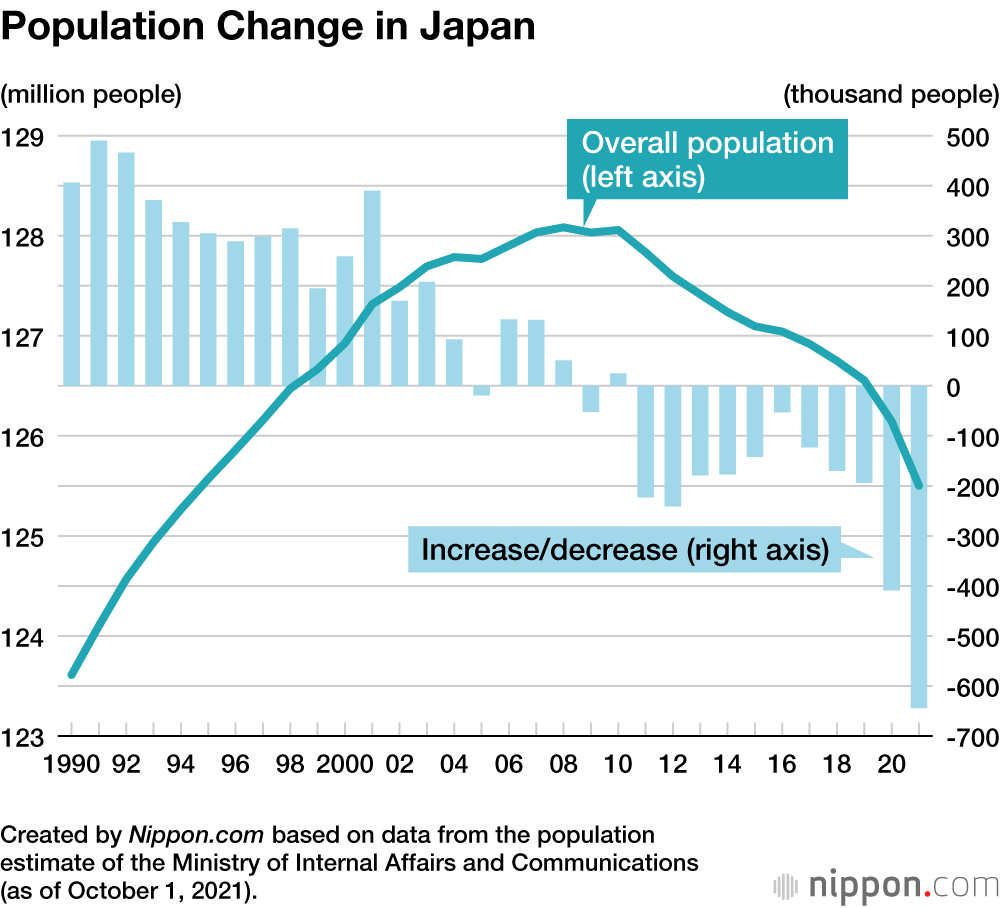
Shrinking Japan: Even Tokyo Sees First Population Decline in 26 Years
Politics Society Economy Family- English
- 日本語
- 简体字
- 繁體字
- Français
- Español
- العربية
- Русский
An estimate released by Japan’s Ministry of Internal Affairs and Communications shows that the total population as of October 1, 2021, was 125,502,000. This was a drop of 644,000 (0.51%) from the previous year. As the largest decline since 1950, when figures became comparable, it indicates how population decline is accelerating.
This is the eleventh consecutive year that the population decreased. The natural population decline, calculated by subtracting births from deaths, rose year-on-year by more than 100,000 people to 609,000. In recent years, this had been offset to a degree by a net increase in immigration, but in 2021, there was a net decrease for the first time in nine years, as 35,000 more people left Japan than entered it.
By prefecture, the population only increased in Okinawa. All other 46 prefectures saw a decrease. This included five prefectures—Saitama, Chiba, Tokyo, Kanagawa, and Fukuoka—which had seen an increase the previous year. Tokyo’s population decreased for the first time since 1995, by 38,000 to 14,010,000.
By age group, the working-age population, consisting of those from 15 to 64, stood at 74,504,000; a decrease of 584,000 from the previous year. This accounted for 59.4% of the total, which is the lowest ever percentage based on statistics since 1950. The senior population aged 65 and over, on the other hand, increased by 188,000 year-on-year to 36,214,000. This cohort now accounts for 28.9% of the total population, which is the highest percentage on record. Within that range, people aged 75 years or older increased by 72,000 to 18,674,000, meaning that they account for more than half of the population of those over 65.
(Translated from Japanese. Banner photo © Pixta.)


